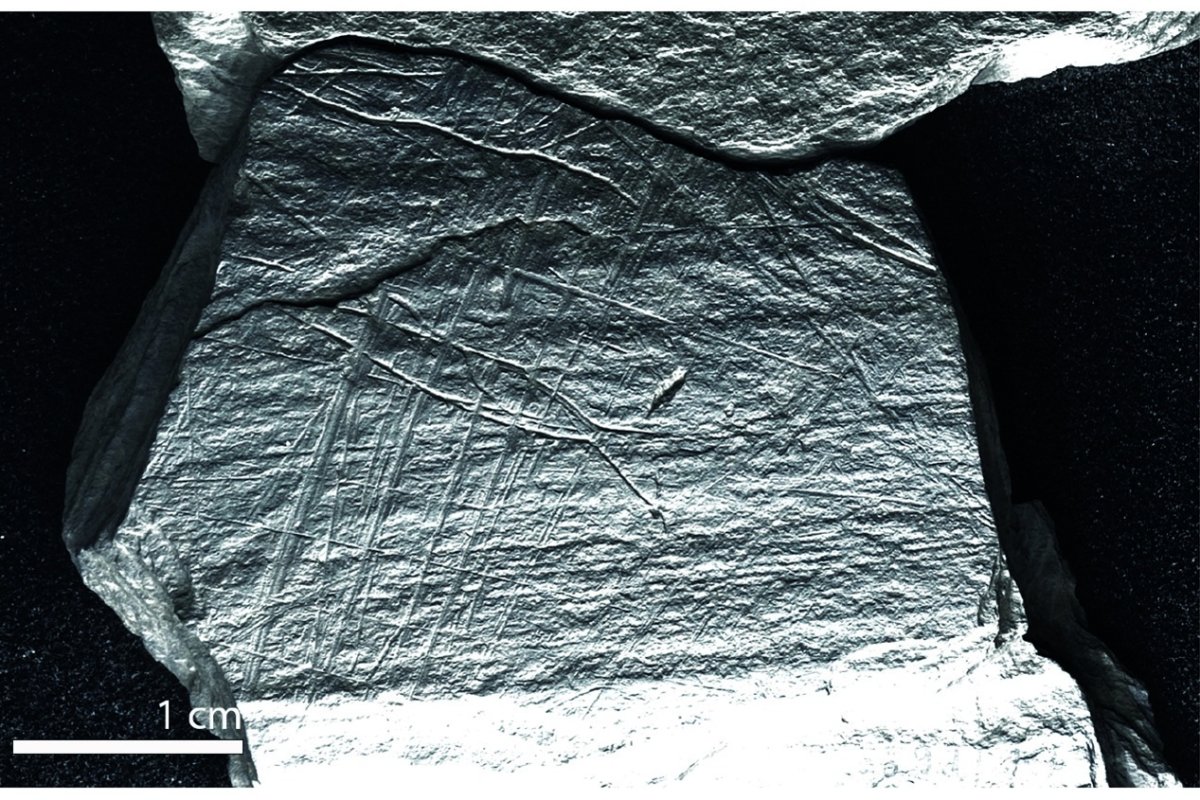Researchers have revealed remarkable 15,800-year-old engravings on a set of prehistoric artifacts from the last ice age.
The engravings, described in a study published in the online journal PLOS One, appear on stone "plaquettes" found at the ice age campsite of Gönnersdorf, which is on the banks of Germany's Rhine River. The term plaquette refers to a piece of stone, bone, ivory or antler that has a flat surface engraved or carved with artwork, often associated with European cultures of the Upper Paleolithic period.
The newly revealed engravings on the Gönnersdorf plaquettes depict fish as well as grid-like patterns that the study's authors interpret as illustrations of fishing nets or traps.
According to the interdisciplinary research team, which involved experts from the U.K.'s Durham University and the Leibniz Center for Archaeology in Germany, the Gönnersdorf engravings are among the earliest known depictions of net or trap fishing in European prehistory.

The latest findings cast new light on fishing practices during the Upper Paleolithic, a period that dates from 50,000 to 40,000 years ago to roughly 10,000 years ago. The study provides evidence of fishing techniques involving nets, for which there was previously a lack of evidence with regards to the Upper Paleolithic.
In the new study, the researchers employed novel imaging techniques to investigate a collection of more than 400 plaquettes found at the Gönnersdorf site, which were produced by the late Upper Paleolithic people who occupied the camp. While these plaquettes have been extensively studied in the past, the research team used an advanced imaging technology known as reflectance transformation imaging (RTI) that enabled them to uncover never before seen details in some of the artifacts.
These investigations identified several depictions of fish, which in eight cases were found to be in association with lines arranged in gridlike patterns. These intricate scenes are thought to represent fishing nets or traps, the study reports.
"RTI's capability to manipulate light and shadow in a digital environment allowed us to accentuate subtle details on the engraved surfaces, revealing aspects that traditional observation methods might overlook," the study's authors wrote. "Traditional methods, such as direct visual inspection under static lighting conditions or simple photographic documentation, often fail to capture the full depth and intricacy of engravings."
The authors added: "The 'Specular Enhancement' mode in particular allowed us to identify engraved lines that cannot otherwise be seen under normal lighting conditions."
The use of RTI technology played a "critical" role in identifying the previously unnoticed fish-and-grid engravings, the authors said.
The latest findings provide a glimpse into the lives of the late Upper Paleolithic occupiers of the camp—who belong to the Magdalenian cultural phase (dated to around 17,000 to 12,000 years ago)—suggesting that fishing may have held symbolic significance to them.
The authors suggest in the paper that "representations of aquatic life and fishing technologies were not merely utilitarian in nature but were embedded within a broader symbolic framework."
They write: "The Gönnersdorf engravings provide valuable insights into the fishing techniques and tools used by Palaeolithic peoples, and how these practices were translated into visual culture through the depiction of nets characterized by interlaced diamond-shaped and square meshes."
Importantly, the depiction of fish within nets on eight engraved plaquettes—in combination with the presence of fish remains at Gönnersdorf, as well as evidence for textile manufacture and use at the site—provides the first "unambiguous evidence" for net fishing in a Magdalenian context, according to the study.
"Fishing with nets, deriving from a broad spectrum economy, reveals the diversity, adaptability and creativity of prehistoric communities, showcasing their proficiency in utilizing a variety of fishing techniques to sustainably exploit aquatic resources," the authors wrote.
"This research not only enhances our understanding of the diverse subsistence strategies of Palaeolithic societies but also contributes to the broader discourse on the complexity and richness of their cultural practices," they said.
Do you have a tip on a science story that Newsweek should be covering? Do you have a question about archaeology? Let us know via science@newsweek.com.
Reference
Robitaille, J., Meyering, L., Gaudzinski-Windheuser, S., Pettitt, P., Jöris, O., & Kentridge, R. (2024). Upper Palaeolithic fishing techniques: Insights from the engraved plaquettes of the Magdalenian site of Gönnersdorf, Germany. PLOS One, 19(11), e0311302. https://doi.org/10.1371/journal.pone.0311302




















 English (US) ·
English (US) ·